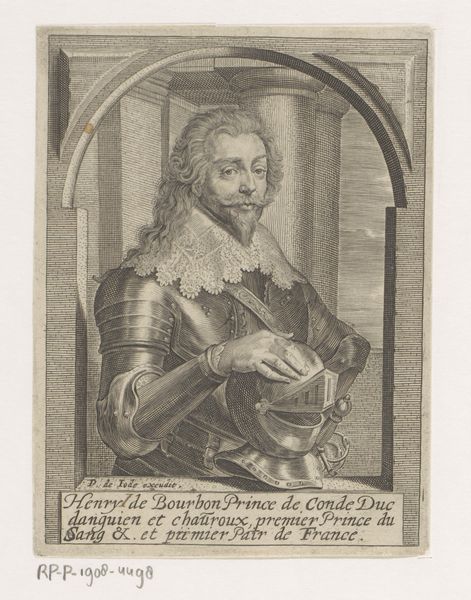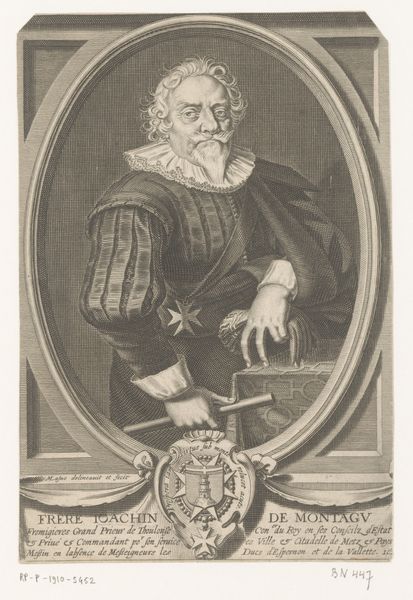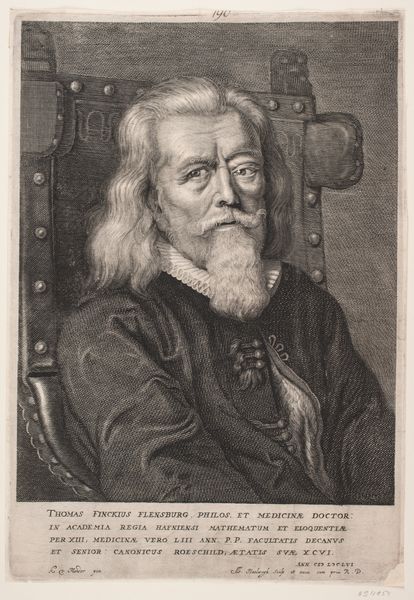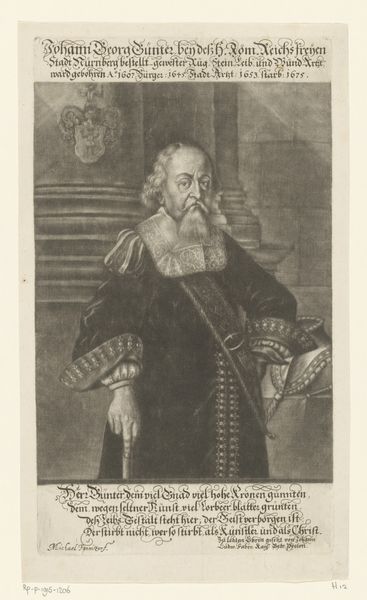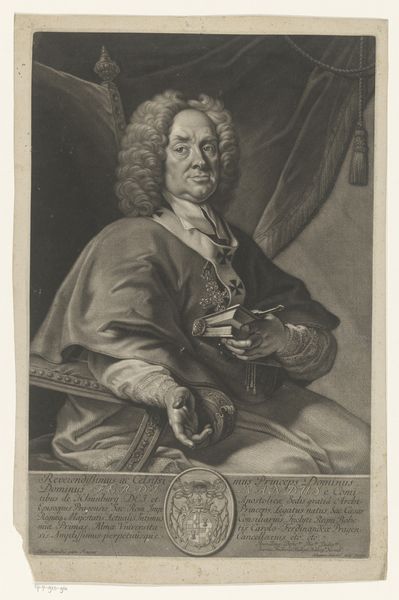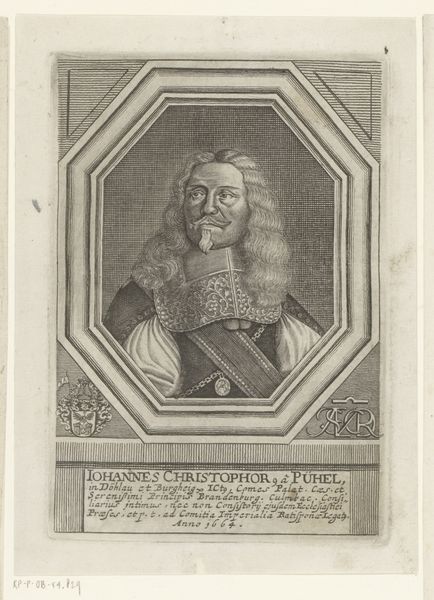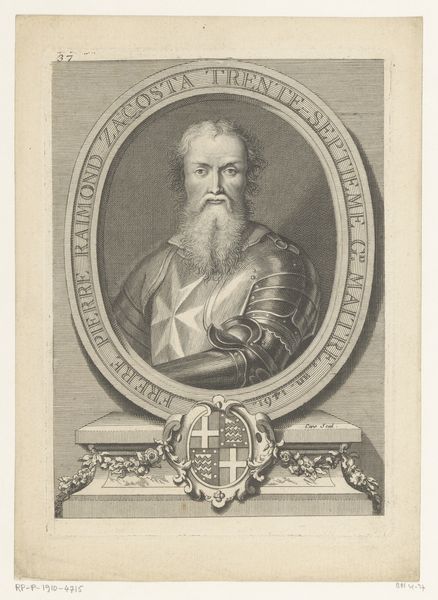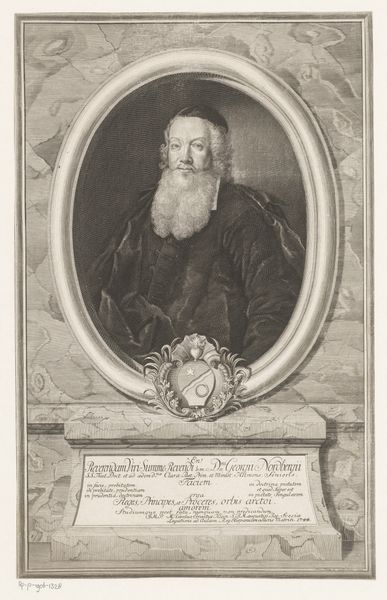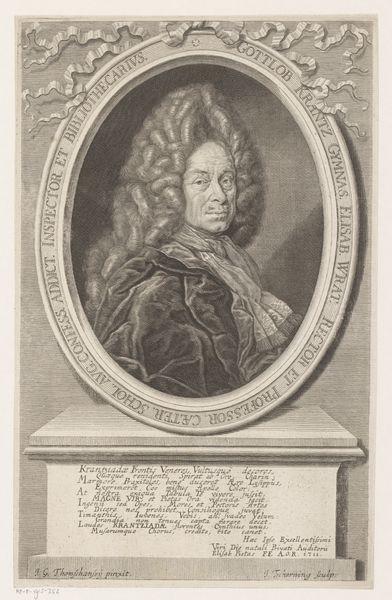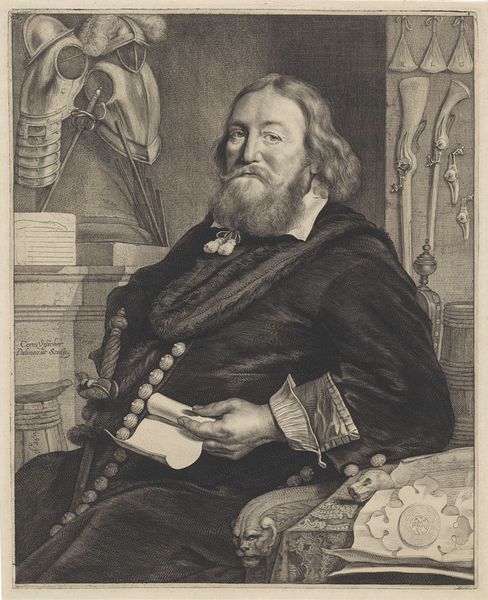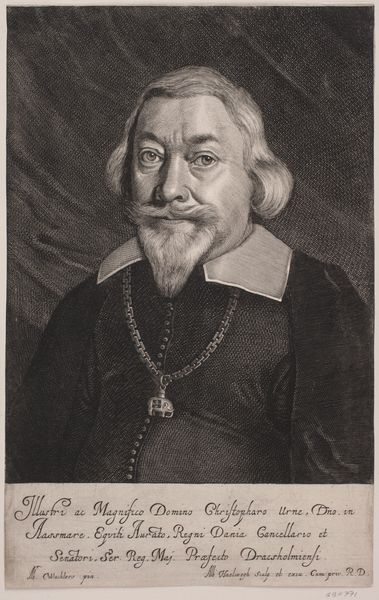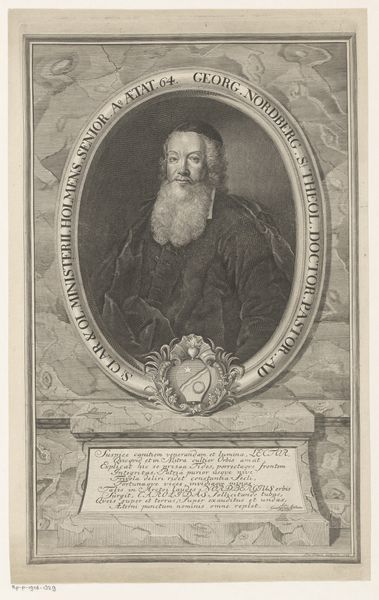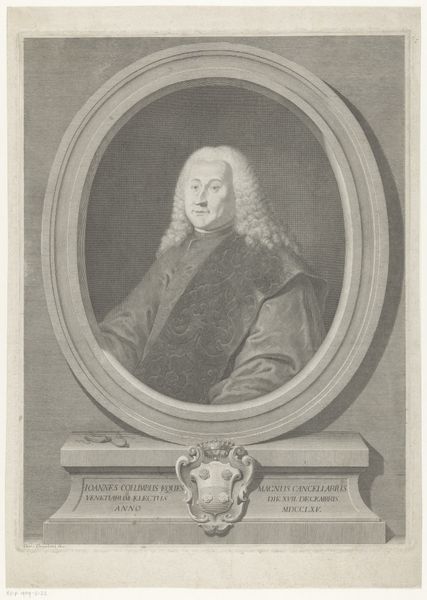
print, engraving
#
neoclacissism
# print
#
book
#
framed image
#
history-painting
#
engraving
Dimensions: height 327 mm, width 228 mm
Copyright: Rijks Museum: Open Domain
Curator: This engraving from the 1770s, "Portret van de schrijver en drukker Thomas Gent," captures its subject framed by an archway, doesn’t it? There’s a weightiness about the man and the materials depicted. Editor: He seems to emerge from a stone window, leaning forward, bathed in the muted greys of the print, simultaneously imposing and approachable. Curator: Exactly. What do you notice about the printing itself? Valentine Green used engraving and it looks like he mastered mezzotint here to achieve these tones. This allowed for more subtle gradations and a broader range of darks. I want to call attention to how the details about Gent's life are actually part of the print itself: He's listed as "Printer, Aged 80, Citizen of London, York, and Dublin." Editor: Absolutely! Those biographical inscriptions, they speak to how a man is understood not just as an individual, but as a figure interwoven within a cultural network. Consider the books: a stack of them on which he rests his arm. It's a subtle, symbolic gesture of the importance of textual labor. His aged hand clasps one book to himself almost possessively, the life of print in his fingers. Curator: His visible role as a printer informs the way we understand his place within society during this era, doesn’t it? To discuss the labor involved in making art tangible, we could dive into how printers and writers of the time sought increased visibility and validation for their work. That role he occupies affects not just the image, but its circulation through print culture. Editor: Indeed. To me, there is this beautiful dialogue between text and image which reinforces the cultural role that print serves at the time. It becomes the keeper of his likeness and memory. Look closely, you see a little text there as well...a script of some sort, clutched as he holds on tight to his occupation. Curator: I think looking at print in the late 18th century lets us engage with those conversations. The image becomes part of an economy and of intellectual exchange at this time. Editor: Absolutely. Green and Gent present a layered commentary. Looking beyond just the surface allows one to see into a web of the production and reception of visual information that gives one insight into a culture that prizes learning, civic engagement, and lasting impact. Curator: I’m particularly taken by how this piece makes visible a moment in this man's life and work, memorialized through specific material choices. Editor: For me, the enduring symbolic weight is clear; that he lives through the visual medium, forever bound to its production.
Comments
No comments
Be the first to comment and join the conversation on the ultimate creative platform.
